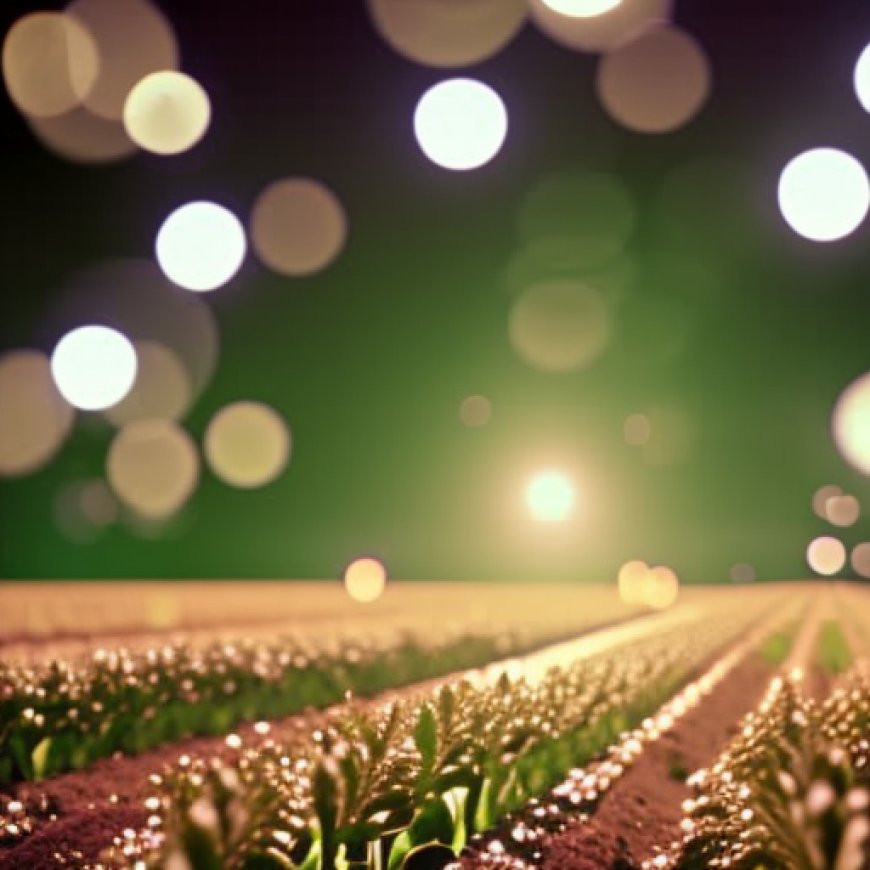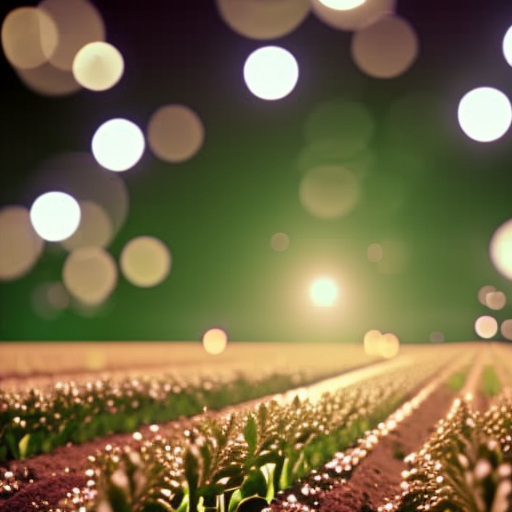Six Decades of Trends: “Global agricultural output increased by about fourfold”
Six Decades of Trends: "Global agricultural output increased by about fourfold" RFD-TV


Agricultural Transformation and Sustainable Development Goals
A recent report by the United States Department of Agriculture (USDA) examines the transformation of global agriculture over the past six decades, highlighting key developments and trends.
Changes in Agricultural Output
According to Keith Fuglie, a research economist at USDA, global agricultural output has increased fourfold from 1961 to 2020. However, the composition of this output has changed significantly. Traditional crops like root and tuber crops and cereal grains now make up a smaller share of total output compared to previous decades. On the other hand, there has been significant growth in the production of oil seeds, fruits and vegetables, and non-ruminant livestock such as poultry and pork. Additionally, there has been a substantial increase in aquaculture or farm-raised fish.
Focus on Sustainability
The USDA report aims to analyze broad trends in global agricultural production, resource use, and productivity. It examines the efficiency of resource utilization in agriculture and its long-term sustainability. The report considers the ability of the world to produce enough food to feed a growing population at an affordable price, as well as the impact of agriculture on farm resources, natural resources, and the environment. The goal is to provide a comprehensive global perspective on the trends that have shaped agriculture in recent decades.
Related Articles
- Moved $650 Million Worth of Ag Products: AFBF weighs in on the Baltimore bridge collapse and impact on ag
- Improving food security and rural economics one oyster at a time
- North Carolina’s DPK Inc. is All About Tilapia!
SDGs, Targets, and Indicators
1. Which SDGs are addressed or connected to the issues highlighted in the article?
- SDG 2: Zero Hunger
- SDG 12: Responsible Consumption and Production
- SDG 14: Life Below Water
- SDG 15: Life on Land
2. What specific targets under those SDGs can be identified based on the article’s content?
- SDG 2.3: By 2030, double the agricultural productivity and incomes of small-scale food producers, in particular women, indigenous peoples, family farmers, pastoralists, and fishers, including through secure and equal access to land, other productive resources and inputs, knowledge, financial services, markets, and opportunities for value addition and non-farm employment.
- SDG 12.3: By 2030, halve per capita global food waste at the retail and consumer levels and reduce food losses along production and supply chains, including post-harvest losses.
- SDG 14.4: By 2020, effectively regulate harvesting and end overfishing, illegal, unreported and unregulated (IUU) fishing, and destructive fishing practices and implement science-based management plans, to restore fish stocks in the shortest time feasible, at least to levels that can produce maximum sustainable yield as determined by their biological characteristics.
- SDG 15.5: Take urgent and significant action to reduce the degradation of natural habitats, halt the loss of biodiversity, and, by 2020, protect and prevent the extinction of threatened species.
3. Are there any indicators mentioned or implied in the article that can be used to measure progress towards the identified targets?
- Indicator 2.3.1: Volume of production per labor unit by classes of farming/pastoral/forestry enterprise size.
- Indicator 12.3.1: Food loss index.
- Indicator 14.4.1: Proportion of fish stocks within biologically sustainable levels.
- Indicator 15.5.1: Red List Index.
SDGs, Targets, and Indicators Table
| SDGs | Targets | Indicators |
|---|---|---|
| SDG 2: Zero Hunger | Target 2.3: By 2030, double the agricultural productivity and incomes of small-scale food producers, in particular women, indigenous peoples, family farmers, pastoralists, and fishers, including through secure and equal access to land, other productive resources and inputs, knowledge, financial services, markets, and opportunities for value addition and non-farm employment. | Indicator 2.3.1: Volume of production per labor unit by classes of farming/pastoral/forestry enterprise size. |
| SDG 12: Responsible Consumption and Production | Target 12.3: By 2030, halve per capita global food waste at the retail and consumer levels and reduce food losses along production and supply chains, including post-harvest losses. | Indicator 12.3.1: Food loss index. |
| SDG 14: Life Below Water | Target 14.4: By 2020, effectively regulate harvesting and end overfishing, illegal, unreported and unregulated (IUU) fishing, and destructive fishing practices and implement science-based management plans, to restore fish stocks in the shortest time feasible, at least to levels that can produce maximum sustainable yield as determined by their biological characteristics. | Indicator 14.4.1: Proportion of fish stocks within biologically sustainable levels. |
| SDG 15: Life on Land | Target 15.5: Take urgent and significant action to reduce the degradation of natural habitats, halt the loss of biodiversity, and, by 2020, protect and prevent the extinction of threatened species. | Indicator 15.5.1: Red List Index. |
Behold! This splendid article springs forth from the wellspring of knowledge, shaped by a wondrous proprietary AI technology that delved into a vast ocean of data, illuminating the path towards the Sustainable Development Goals. Remember that all rights are reserved by SDG Investors LLC, empowering us to champion progress together.
Source: rfdtv.com

Join us, as fellow seekers of change, on a transformative journey at https://sdgtalks.ai/welcome, where you can become a member and actively contribute to shaping a brighter future.







